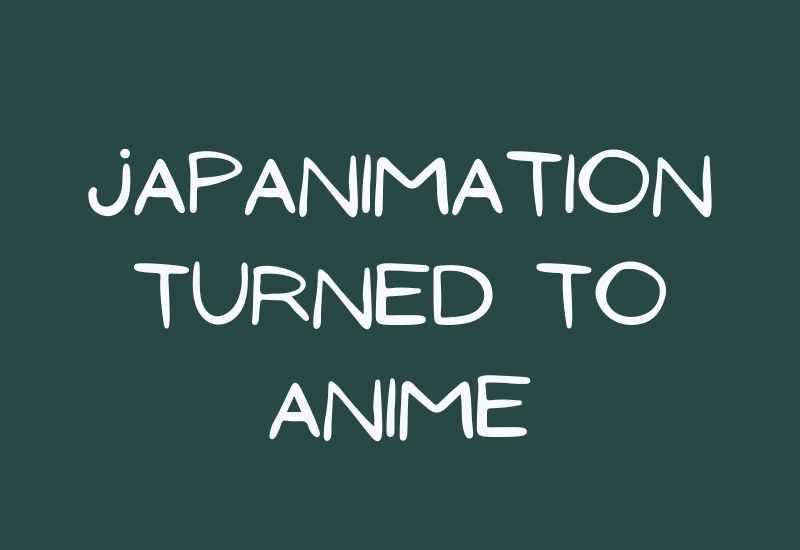Table of Contents
What Is Anime?
Anime is a form of animation, but it is also an art form that incorporates many genres that can be found in other mediums. Because of this, anime is often wrongly categorized as a genre on its own.
The term “anime” is used to refer to any and all forms of animation in Japanese, irrespective of their country of origin or specific style. The definition of anime that is most commonly found in dictionaries written in English is “a style of Japanese animation” or “a kind of animation that originated in Japan.”

According to certain definitions, the term “anime” can only be applied to works that are produced in Japan. This makes the country of origin an essential qualification for the term.
There is some debate on the origin of the word “anime.” Some sources assert that the term originates from the French phrase animation dessin animé, which translates to “cartoon” but literally means “animated design.”
Other sources believe that this is a myth that developed as a result of the growing popularity of anime in France during the late 1970s and early 1980s.
When functioning as a common noun in English, anime typically serves the same purpose as a mass noun. Along the same lines as a few other Japanese words, such as “sake” and “Pokémon,” English texts may spell anime as animé (as in French), with an acute accent over the final “e” to signal to the reader to pronounce the letter, as opposed to leaving it silent as English orthography may suggest.
This is done for the same reason that a few other Japanese words, such as “sake” and “Pokémon,” may do the same thing. Throughout the decade of the 1970s and the decade of the 1980s, the word Japanimation was widely used prior to the proliferation of anime.

Beginning in the middle of the 1980s, the term Japanimation was gradually replaced by the term anime. These days, the term Japanimation is generally only used in older works where it is used to differentiate and identify Japanese animation.
When Japanese filmmakers first began experimenting with animation techniques developed in other countries, such as France, Germany, the United States of America, and Russia, the country’s animation industry was just getting started.
“Katsudo Shashin,” a private work created by an unidentified creator around the year 1907, is often cited as the first example of Japanese animation. Animators such as Ten Shimokawa, Seitar Kitayama, and Jun’ichi Kuchi, who are regarded as the “fathers of anime,” began producing numerous films in 1917.
Of these films, “Jun’ichi Kuchi’s Namakura Gatana” is the oldest one that has survived to the present day. The first works that were created for professional use and displayed in public venues appeared in 1917.
As a result of the Great Kant earthquake in 1923, Shimokawa’s warehouse was destroyed, taking a large number of his early works with it.

By the middle of the 1930s, the animation industry in Japan had become well-established as a format alternative to the live-action sector. It was subject to competition from international manufacturers like Disney.
Many animators, such as Noburufuji and Yasuji Murata, continued to work using cutout animation rather than cel animation because it was less expensive. Other producers, notably Kenzō Masaoka and Mitsuyo Seo, still achieved considerable leaps in technique, benefiting from the support of the government, which paid animators to produce educational shorts and propaganda.
In 1940, the government of Japan formed the Shin Nippon Mangaka Kykai out of numerous artist organizations that it had previously disbanded. The earliest talkie animation was “Chikara to Onna no Yo no Naka” (1933), a short film produced by Masaoka.
The first feature-length anime film was “Momotaro: Sacred Sailors” (1945), created by Seo with a sponsorship from the Imperial Japanese Navy. The 1950s witnessed a boom of short, animated advertising developed for television.
Different Features of Anime
Anime is distinguished from other types of animation by its distinct art styles, animation techniques, production techniques, and storytelling techniques.

Visually, anime works display a vast variety of art styles due to the fact that their designers, artists, and studios all have their own unique approaches.
Although there isn’t a particular art style that dominates anime as a whole, the many styles do have some things in common, especially when it comes to the animation techniques and character designs they use.
Anime is fundamentally distinguished by the use of limited animation, flat expression, the suspension of time, its thematic range, the presence of historical figures, its complex narrative line, and above all, a peculiar drawing style, with characters characterized by large and oval eyes, with very defined lines, bright colors, and reduced movement of the lips.
Anime is also distinguished by its thematic range, the presence of historical figures, its complex narrative line, its thematic range, and the presence of historical figures.
Add These Anime Figures to Your Wishlist Now!
Nendoroids

The Nendoroids are a line of miniature anime figures known for their disproportionately large heads. P.V.C. or A.B.S. is the material that they are made of.
Their diminutive stature, which averages about 10 centimeters in height, is one of the things that sets them apart. In most cases, they have an endearingly chubby appearance.
Their outward manifestations and other components of their bodies are replaceable, which provides them with a wide range of potential articulations and postures.
They are both played with as toys and collected by people who are interested in anime figures. Produced mostly by Good Smile Company, they are characterized by a singularly adorable chibi design and typically come in sizes no larger than ten centimeters.
This sort of figure’s face can be removed, allowing a variety of expressions to be chosen from the available options. Additionally, the joints and the accessories that come with the Nendoroid can be switched out for others of their kind.
Nendoroid Dolls

The Nendoroid doll is the latest product to be released by Good Smile Company as part of their Nendoroid series.
Because their anatomy is comparable to that of a ball-jointed doll (BJD), it is simple to give them a variety of various looks by dressing them in different clothes.
The height of the body is fixed at 10 centimeters, as is the head, which may be replaced with a variety of different faces to create a variety of different expressions.
The fact that their clothing is made out of genuine fabric, in addition to the fact that their costumes can be changed, is the primary distinction between them and standard Nendoroids.
Scales

The reason that these collectibles are referred to as “scale figures” is because their dimensions are based on those of the corresponding real-world anime characters.
The majority of them are able to be produced in a diverse selection of scales, ranging from 1/18 to even 1/1, which is equivalent to life-size. However, the average is somewhere between 1/7 and 1/8 on the scale.
They are carefully crafted P.V.C. figures that replicate the characteristics of the characters in as much detail as is practicable. There might be a significant difference in price between different brands and manufacturers.
It has come to my attention that the most well-liked scale figures are frequently adapted from special release anime or manga source materials. For instance, anniversary artwork (such as Sakura), film, or OVA scenes are common examples of these adaptations.
They are referred to by this moniker because the primary component used in their construction is polyvinyl chloride, also known as P.V.C. for short.
The majority of the time, the individual components of the figures are mass-produced by manufacturing machines, and then the figures are assembled by hand. They are created with the intention of being scaled to a specific size, which in most cases directly corresponds to the size of a real-life character.
Although not all of these statues are exact replicas, the vast majority of them are sized between 1/8th and 1/5th. Some of the fighters were sized at 1/1 (full scale!), while others were more typically scaled at 1/4.
There are also anime statues that are scaled at one-tenth of the original size. In order to make these numbers appear as authentic as possible, a lot of detail has been put into them.
The price can range anywhere from $70 to $300, depending on the size and level of complexity of the figure. Typically, larger figures with more intricate details cost more. There are rare occurrences in which the costs could be significantly higher or lower than expected.
Figma

A genuine anime figure that not only moves in a realistic and natural way but also combines a stunning design with a high level of articulation.
They are adorable figures from an anime series. These poseable Figma anime figures allow you to adjust their joints into virtually any position, making them perfect for role-playing.
Fans of anime who are interested in drawing will find that the plain body Figma not only enables them to sketch but also teaches them how to draw human characters more effectively. There are certain similarities between Figma figures and action figures.
In most cases, their heads, arms, and legs are all equipped with ball joints that allow for a full range of motion. These types of figurines have the advantage of being able to be formed into virtually any pose that the user desires; as a result, playing with them is more pleasant than with other forms of toys.
Because of this, you are able to manipulate their joints into virtually any position. This may have certain useful applications; for instance, it may make the figure easier to draw for artists, or it may make it possible to display it at a location that is more suitable to its dimensions.
Because they can also be classified as action figures, Figmas are versatile collectibles that can be put on display or used for play.
Gachapon

The name gachapon refers to the toy capsules that are sold in vending machines and are widely popular in Japan as well as other countries. When compared to the other variations, which are of lower quality, the gachapon toys are a product of much higher quality.
The rights to manufacture and sell these toys typically belong to well-known characters from video games or other entertainment sectors. There are two distinct kinds of gachapon to choose from.
The first one is comprised of blind boxes, and the second one is made up of bottle cap figures.
Blind Boxes

Over the course of the last several years, the term gachapon has also come to be used to refer to blind boxes. The only difference is that it comes in hermetically sealed containers rather than a machine.
Bottlecap Figures

In some cases, this is also known as a fallout. These bottle cap figurines are affixed to a plastic bottle cap in their present configuration. This category is the one that can be purchased from vending machines or blind boxes. In addition, there are no bottle caps that truly do their job.
Trading Anime Figures

The same trade anime figurine can look significantly different depending on the manufacturer. The figures are sold in sets most of the time, and each set includes one hidden unique figure.
The quality of these figures is far higher than that of the gachapons. When you buy these figures, you don’t know if you’ll just get different colored versions of the same figure or if you’ll get the same figure more than once.
Prize Figures

These figures are gaining popularity, and the majority of the time, their success can be connected to the success of their close sibling scale figures.
There is a connection between these kinds of figures and the lottery method that is used in Japan. You can buy the voucher or coupon that comes with the letter by going to the manufacturer’s stand. The letter comes with the voucher or coupon.
The winner of the prize is determined by picking a letter at random, and that letter is related to the reward. If you have a voucher with a higher value, you will be rewarded with things with a higher value.
G.E.M.

It is well knowledge that the G.E.M. series is of an exceptionally high caliber and that this series is geared toward the enjoyment of female fans.
These popular comic book and anime characters served as inspiration for these action figures based on anime. The majority of the figures are part of a series that is built to 1/8 size, but others are made to no scale at all.
The majority of the time, the G.E.M. figures are produced in a restricted quantity. These figures are typically Digimon figurines or larger Pokemon or some other character surrounded by items that cannot be scaled well.
Sometimes they are surrounded by items that cannot be scaled at all. The price tags on these books are appropriate for the series. You can count yourself among the lucky ones if you manage to get a hold of one.
Pre-Painted Anime Figures

When it comes to figures made of P.V.C. material, pre-painted models are typically the most expensive and appealing options.
They are entire statues or figures that have been fashioned in the likeness of the anime character. These figurines are designed to be an exact representation of the anime character from which they are d
Model Kits

These anime dolls are constructed of plastic, and in order to put them together, you will need to follow the included instructions.
You will receive a package including the components as well instructions for their assembly. These anime figures are perfect for you if you are someone who enjoys creating things on your own and taking pleasure in the process.
Chibi

Chibi action figures are easily recognizable due to the stylistic details that have been included in their designs. These toys feature heads that are excessively enormous in comparison to their bodies, which are of a standard size.
The “Funko P.O.P.!” series of action figures is one of the most well-known examples of toys that are inspired by this design. These, in addition to Nendoroids and Kotobukiya Chibis, are a significant section of the figurine market that seeks distinctively cutesy characteristics.
Collectible Pins

One such variety of anime figures is more along the lines of a multipurpose pin.
Collectible pins can be found in a wide variety of forms, dimensions, and designs; nevertheless, a significant number of them include characters from anime, such as those seen at FiGPin. These collectibles can be worn as an accessory or shown as a statue, depending on how they are displayed.
What Will You Start Your Collection With?
With this easy-to-understand guide to the many sorts of anime figures at hand, you will be able to successfully navigate the complex world of collectible figurines available online and gradually create your own collection!
Shonen brings you the latest info from your favorite anime. Visit our news page for more updates
